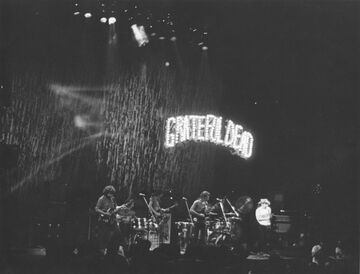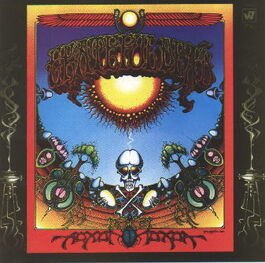
About The Album
Originally named The Warlocks, The Grateful Dead made their performance debut in July of 1965 and quickly went on to become the best known and most influential of San Francisco's psychedelic rock pioneers. The group initially consisted of Jerry Garcia (guitar), Bob Weir (guitar), Phil Lesh (bass), Ron "Pigpen" McKernan (keyboards), and Bill Kreutzmann (drums). In 1968 they added percussionist Mickey Hart and keyboardist Tom Constanten to the line-up.
The group released its debut LP in 1967. Both the follow-up album, Anthem of the Sun (1968), and the group's third offering, Aoxomoxoa (1969) , were innovative attempts to capture the band's legendary live energy on vinyl.
Aoxomoxoa, featuring eight Grateful Dead originals, was produced and arranged by the band. Showcasing the group's rapidly evolving songwriting skills, the album contains such Dead classics as "St. Stephen," "China Cat Sunflower" and "Dupree's Diamond Blues." With music by Garcia and Lesh, the LP's lyrics were penned by poet Robert Hunter, a longtime friend of the band's.
Aoxomoxoa also includes some of the Grateful Dead's most daring aural experiments, including the eerie "What's Become Of The Baby," and the haunting "Rosemary" with its phased and filtered vocal layers.
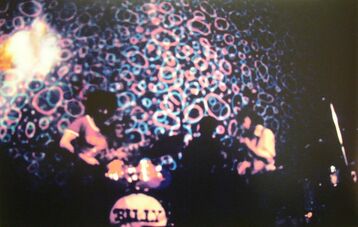
6-21-69
Aoxomoxoa is the third studio album by the Grateful Dead and was first released June 20, 1969. It was originally titled Earthquake Country. Many Deadheads consider this era of the Dead to be the experimental apex of the band's history. It is also the first album with Tom Constanten as an official member of the band. Rolling Stone, upon reviewing the album, mentioned that "no other music sustains a lifestyle so delicate and loving and lifelike." The album was certified gold by the RIAA on May 13, 1997.
The title of the album is a palindrome created by cover artist Rick Griffin and lyricist Robert Hunter. According to the audio version of the Rock Scully memoir, Living with the Dead (read by the author and former Dead co-manager himself), the title is pronounced "ox-oh-mox-oh-ah". The words "Grateful Dead" on the front of the album, written in large, flowing capital letters, are an ambigram that can also be read "we ate the acid". The artwork around the bottom edge of the album cover depicts several phallic representations.
In 1991 Rolling Stone selected Aoxomoxoa as having the eighth best album cover of all time. A five-year-old Courtney Love appears on the album's back cover.
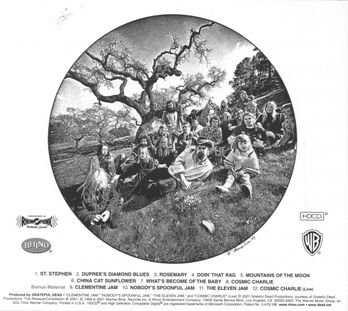
back cover
Making of the album
The group had already initiated recording sessions for the album when Ampex manufactured and released the first Multitrack recording machine offering 16 tracks of recording and playback (model number MM-1000). This doubled the number of tracks the band had available when they recorded Anthem of the Sun the previous year. As a direct consequence, the band spent eight months off-and-on in the studio not only recording the album but getting used to—and experimenting with—the new technology. Garcia commented that "it was our first adventure with sixteen-track and we tended to put too much on everything...A lot of the music was just lost in the mix, a lot of what was really there." As a result, Garcia and Lesh went back in the studio in 1971 to remix the album, removing whole sections of songs. The result, with the same catalog number, WS1790, but with much of the original's experimental character removed, can be identified by the legend on the back cover that reads, "Remixed September, 1971". The original mix was later planned for CD release, but the original master tapes could not be located. The master tapes were finally located for The Warner Bros. Studio Albums vinyl box set, marking the first time the 1969 mix has been available since the 1971 remix replaced it.
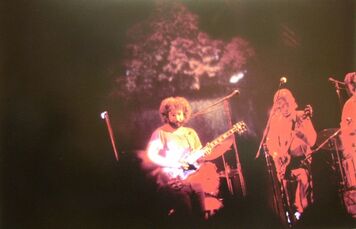
6-21-69
In Grateful Dead history, Aoxomoxoa had a number of firsts connected with it. It is the first album the band recorded in or near their hometown of San Francisco (at Pacific Recording Studio in nearby San Mateo, and at the similarly named Pacific High Recording Studio in San Francisco proper). It is the first studio release to include pianist Tom Constanten as a permanent member. It was also the first to have lyricist Robert Hunter as a full-time contributor to the band, thus initiating the Jerry Garcia/Robert Hunter songwriting partnership that endured for the rest of the band's existence. It was also the first time the band would put emphasis on acoustic songs, such as "Mountains of the Moon" and "Dupree's Diamond Blues." Lesh played acoustic bass for the first time, commenting that "the fun part of that was trying to play in tune with no frets to guide my fingers, just like a violin."
The lengthy sessions for the album would put the band deeper into debt with Warner Bros. Records—specifically, a total cost of $180,000 for Aoxomoxoa, it was their most ambitious and costly venture to that date. It would be the last time the band would ever run up such high studio bills.
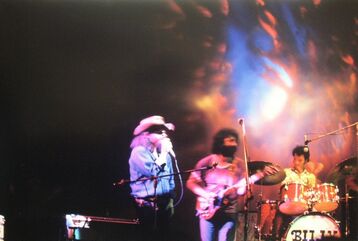
6-21-69
The 2003 reissue (also part of the Golden Road boxed set from 2001) includes three studio jams (including an early version of "The Eleven") from the original aborted eight-track sessions for the album, and a live version of "Cosmic Charlie" recorded early in 1969.
Track listing
All songs written and composed by Jerry Garcia and Robert Hunter, except where noted.
1. Saint Stephen (Jerry Garcia, Phil Lesh, Robert Hunter)
2. Dupree's Diamond Blues
3. Rosemary

6-21-69
4. Doin' That Rag
5. Mountains Of The Moon
6. China Cat Sunflower
7. What's Become Of The Baby?
8. Cosmic Charlie
9. Clementine (Garcia, Lesh, Kreutzmann, Hart, McKernan, Weir)
10.Nobody's Spoonful Jam (Garcia, Lesh, Kreutzmann, Hart, McKernan, Weir)
11.The Eleven Jam (Garcia, Lesh, Kreutzmann, Hart, McKernan, Weir)
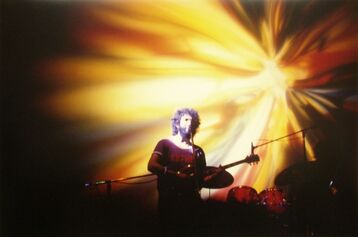
6-21-69
12.Cosmic Charlie
- Tracks 9-11 recorded live in the studio at Pacific Recording Studio, San Mateo, California on August 13, 1968
- Track 12 recorded live at Avalon Ballroom, San Francisco, California on January 25, 1969.
Musical personnel
- Jerry Garcia - guitars, vocals
- Bob Weir - guitars, vocals
- Phil Lesh - bass, vocals
- Bill Kreutzmann - drums, percussion
- Mickey Hart - drums, percussion
- Tom Constanten - keyboards
- Ron McKernan - Pigpen

6-21-69
Production personnel
- Grateful Dead - producers and arrangers
- Bob Matthews - executive engineer
- Betty Cantor - engineer
- Ron Wickersham - consulting engineer
- Dan Healy - consulting engineer
- Owsley Stanley - consulting engineer (credited as "Owsley")
- Ram Rod, John P. Hagen & Jackson - equipment managers (listed as "Kwipment Krew")
Reissue production credits
- James Austin and David Lemieux - reissue producers
- Peter McQuaid - executive producer, Grateful Dead Productions
- Michael Wesley Johnson - associate producer, research coordination
- Eileen Law - archival research, Grateful Dead Archives
- Cassidy Law - project coordination, Grateful Dead Archives
- Jeffrey Norman - additional mixing on bonus tracks
- Joe Gastwirt - mastering, production consultant
